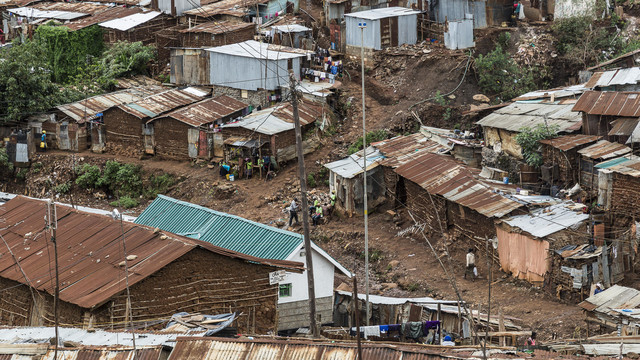Allyship not ownership: how NGOs can back social movements
The Green Economy Coalition's Ben Martin continues our series exploring the importance of public climate movements and what this could mean for organisations working on sustainable development. He argues that NGOs are best placed to take a supportive back seat role, not to be backseat drivers.


People in 150 countries participated in the September 2019 global climate strike. The youth-led protest called for for faster action on climate change (Photo: mathiaswasik via Flickr, CC BY-NC-SA 2.0)
New social movements are blossoming. Across Europe and Australia, schoolchildren are striking to demand an end to climate complacency. Extinction Rebellion’s civil disobedience has shifted the dial on climate policy.
And this new wave of social activism is global, including many lesser-reported groups: citizens walking against climate change in Uganda, protesting against air pollution in Mongolia, or demanding justice for slum dwellers in India, among many more.
Fizzling out or firing up?
Of course, social movements often wither after early fanfare: Wall Street is little altered despite its occupation; Joseph Kony remains un-gotten.
But the new wave is already having impact. Striking schoolchildren pushed the UK’s Conservative government to adopt a 2050 net zero target. France’s Gilet Jaunes prompted a new citizen-led approach to environmental policymaking. In the United States, the youth-led grassroots Sunrise Movement has elevated the Green New Deal from a political fantasy to the official climate policy of the Democratic Party.
So why is this wave of civic climate action seemingly so effective? There isn’t a single answer to cover so many movements and locations. But broadly speaking, three interconnected, self-reinforcing factors may be buoying new movements.
Fertile conditions for change
The first factor is a changed political and social landscape. Public awareness and news coverage of climate change is at an all-time high (PDF), green parties are surging, and low-carbon technologies such as electric cars are becoming mainstream.
Meanwhile, years of wage stagnation, rising inequality and increasing political alienation are fuelling the passion behind calls for change.
Secondly, strategies of direct action and civil disobedience have cut through a crowded media landscape to achieve sustained mainstream coverage and social media attention. This has been helped by a fresh focus on more easily-understood demands.
In 2014, the People’s Climate March – the largest climate protest in history – was barely reported outside the liberal press. Today, traditionally right-leaning media outlets are not only acknowledging climate protestors, but even giving them the occasional sympathetic hearing.
Finally, there’s the fact that these are genuine bottom-up, citizen-led peoples’ movements, even children’s movements, not orchestrated by NGOs, charities or political organisations. As such they appear more genuine and arguably carry more moral authority. In a polarised and protest-fatigued world, this matters.
Reconsidering roles
The success of social movements poses a challenge for more ‘traditional’ campaigning organisations: how best to engage? NGOs have been trying to mobilise citizens on climate action for years, even decades; now that citizens seem to be mobilising themselves, environmental charities risk ending up like the dog that finally caught the car – not knowing what to do next!
Obviously, any attempt by NGOs to direct or unduly influence movements that are fiercely proud of their independence would be a mistake. And established organisations must tread carefully in working with groups that use civil disobedience; appearing to sanction criminal acts puts charitable status at risk.
But organisations also face reputational risks if they are not proactively engaged with social movements and their agendas – seen as behind the curve, conservative, or even part of the problem.
The UK youth strikes are a case in point. NGOs loudly offered supportive platitudes, praising the “climate leaders of tomorrow”. But this missed the point: by the time the strikers are in charge, it will be too late.
What’s being demanded is action from the leaders of today – including climate-focused charities and campaigning organisations.
Convening, not controlling
One model of what that action might look like emerged last summer. In June 2019, the Green Economy Coalition (GEC) organised a discussion between young leaders from the school strikes together with decisionmakers from the worlds of business, investment and finance.
It was remarkably powerful, with several participants moved to tears, as both students and business leaders shared their vulnerabilities and found inspiration together.
The young people were clear that what they really want from the private sector is not branding advice, logistical support, policy papers or even funding. It is to be heard and understood by those with the power to enact change now, and to see action as a result.
And this is where a new role for organisations like GEC and IIED became clear.
Established organisations can access networks of institutions, industry groups, private businesses and government forums – UN, Davos, climate change summits and more – that social movements can struggle to access on their own, at the right level or on positive terms.
Building bridges
One of the GEC’s primary roles is that of convenor – here we might act as a bridge between the rising yet still inchoate new green movements and the more established institutions of government and business: credible to both, beholden to neither.
Who knows what can be achieved if we bring together the resources, status and political access of traditional organisations with the moral force and media power of citizen-led movements?
So this is part of the GEC Strategy for 2020-2030: engaging with social movements through convening, rather than controlling. We will seek to open doors so that their messages, unfiltered by us, are heard in the corridors of power.

